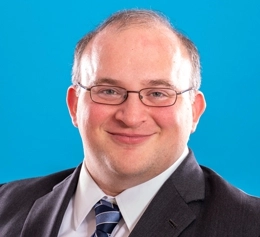
IBM is famous for obtaining a lot of patents. Year after year, they’re the top recipient of U.S. patents (or, once in a while, in second place when you account for related entities.)
But they’re also infamous among patent practitioners for abandoning a lot of patents after they issue. Like, a lot of patents. IBM actually abandons nearly 60% of their patents post-issue.
Why would you pay money to get a patent and then get rid of it?
The answer lies in some arcane details of how much the USPTOUnited States Patent and Trademark Office. See also PTO. gets paid and when. Bear with me here, we’re going to talk about unit costs and maintenance feesFees for maintaining in force a patent based on an application filed on or after December 12, 1980. See MPEP 2500 for more..
USPTO Fee Structure
The USPTOUnited States Patent and Trademark Office. See also PTO. is, by law, supposed to set its fees at a level sufficient to recover its expenses. In other words, their overall fee income is supposed to roughly match their overall expenditures. But patent applicants don’t pay a single up front fee—they pay a variety of fees over the life of the patent. They pay a set of fees when they file (the application, search, and examination fees) and another set of fees if the application process takes a while (request for continued examination, or RCERequest for Continued Examination. First established by the AIPA, RCEs enable a patent applicant to extend his or her efforts to obtain the patent after final rejection of the application by the examiner. By paying a fee and filing an RCE, an applicant can start over. There is no limit to the number of RCEs that an applicant can file., fees). Then they pay a fee when the patent is granted, the issue fee. Finally, after they receive a patent, they pay maintenance feesFees for maintaining in force a patent based on an application filed on or after December 12, 1980. See MPEP 2500 for more. to keep it in force, at 4 years, 8 years, and 12 years post-issue.
Each of these fees serves a purpose. The filing fees make sure they don’t get overwhelmed by applications the way they might if there was no cost to file. The RCERequest for Continued Examination. First established by the AIPA, RCEs enable a patent applicant to extend his or her efforts to obtain the patent after final rejection of the application by the examiner. By paying a fee and filing an RCE, an applicant can start over. There is no limit to the number of RCEs that an applicant can file. fees help make sure that extended prosecutionPatent prosecution is the process of applying for a patent, along with any further proceedings before the USPTO. is paid for by the company extending it, not by other filers. The issue fee and maintenance feesFees for maintaining in force a patent based on an application filed on or after December 12, 1980. See MPEP 2500 for more. are essentially fees that try to ask companies “is this patent actually worth money to get, and to keep?” Each one serves its own purpose.
But what’s unusual about the PTO’s fee structure is how it’s balanced versus the cost structure. The bulk of the cost of PTOPatent and Trademark Office, informally used interchangeably with USPTO. operations comes from examination—it doesn’t cost very much to issue a patent or to maintain it once issued. But examination requires examiners, search databases, and a lot of employee time, all of which adds up.
So obviously, you’d expect the USPTO—which, again, is obligated to recover its costs, to make application fees higher and the other fees lower.
But that’s not what they do.
Do You Wait 10 Years To Get Paid For Your Work?
In reality, the PTOPatent and Trademark Office, informally used interchangeably with USPTO. doesn’t actually break even on a patent application until the 8 year maintenance fee is paid. Let’s break it down. (All of this is based on the USPTO’s unit cost data from 2019, and it’s all about large entities—small entities pay significantly discounted fees.)
The average unit cost of examining a patent application through grant is approximately $6,035. This represents the unit cost for filing, search, examination, and for an average of 0.33 RCEs per application.
But to get to that point, an applicant only pays an average of $2,268. That means that, when an applicant gets a notice their patent is allowable, the PTOPatent and Trademark Office, informally used interchangeably with USPTO. is—on average—in the red by $3,767.
At allowance, the PTOPatent and Trademark Office, informally used interchangeably with USPTO. starts its recovery. The cost to issue a patent is $319, but the PTOPatent and Trademark Office, informally used interchangeably with USPTO. receives $1200 for it. That puts them down $2,886.
Then, at the four year maintenance fee, the unit cost is zero, but the patent owner pays $2,000. PTO’s still down, but only by $886 now.
Finally, at the eight year maintenance fee, the unit cost is zero, but the patent owner pays $3,760. Remember, this is eight years after the patent issued, not after application. The PTOPatent and Trademark Office, informally used interchangeably with USPTO. has finally recovered its costs—a decade after the application was filed.
(The 12 year window nets the USPTOUnited States Patent and Trademark Office. See also PTO. another $7,700. The surplus money from large entity fees mostly goes to pay for the discounted rates that small and micro entities pay.)
That’s a problem—if you had to wait a decade to get paid back for your work, it’d wreak havoc on your budget process. And it does create serious challenges for the PTO’s operations, since the number of patent filings isn’t necessarily predictable.
But there’s one piece of behavior that makes this even more complicated.
I’ve Bypassed Maintenance
IBM files a lot of patents. And then they curate them—they figure out which ones might actually be valuable, and if they think they aren’t, they abandon them. This happens pre-issue, and at the four, eight, and twelve year renewals as well.
In fact, IBM abandons fully 45% of its patents before they pay the four year fee. They abandon another 10% before the eight year fee, and a few percent before the twelve year fee. So 55% pay the four year fee, 45% pay the eight year fee, and around 40% pay the twelve year fee.
So let’s go back to the estimated cost to the PTOPatent and Trademark Office, informally used interchangeably with USPTO. at each point.
45% are in the red by $2,886.
10% are in the red by $886.
5% are in the black by $2874.
And 40% are in the black by $10,574.
Put it all together, and the average IBM patent nets the USPTOUnited States Patent and Trademark Office. See also PTO. around $2,985. Sounds great, right?
Except that the average patent applicant abandons around 15% before the four year fee, another 15% before the eight year fee, and another 20% before the twelve year fee.
Do the same math, and you realize that the average patent application nets the USPTOUnited States Patent and Trademark Office. See also PTO. around $5,300.
Multiply that out by IBM’s 9,000+ patents per year, and IBM is paying the USPTOUnited States Patent and Trademark Office. See also PTO. around $20 million per year less than expected. And that means that other filers wind up covering the shortfall—the shortfall that was supposed to help cover the discount that small inventors receive.
Pay It Forward
I want to be clear—IBM isn’t doing anything illegal. And in many ways their abandonment strategy is actually accomplishing what maintenance feesFees for maintaining in force a patent based on an application filed on or after December 12, 1980. See MPEP 2500 for more. are supposed to do. If a patent isn’t valuable to the patent owner, abandoning it turns that IP loose for anyone to use, which is a net positive to society.
But because of the interaction between IBM’s patent strategy and the USPTO’s fee structure, IBM winds up underfunding the agency that provides them with so many benefits.
And that, in turn, hurts the ability of the USPTOUnited States Patent and Trademark Office. See also PTO. to do its job for other filers, especially small ones, and to maintain a steady operating budget. There’s even some evidence that this backloaded fee structure can actually incentivize the Office to operate in ways that grant marginal patents in order to ensure a steady stream of funding.
If IBM (and other patent applicants) were expected to pay for the examination of their application up front, then the USPTOUnited States Patent and Trademark Office. See also PTO. would have a steadier funding stream and negative incentives would be reduced. As the Federal CircuitSee CAFC recently put it, underfunding the PTOPatent and Trademark Office, informally used interchangeably with USPTO. compared to its expected expenditures risks “harming the public’s interests more broadly, diminishing the patent system’s benevolent nature, and stifling innovation and creativity in the useful arts.”
So Why Not Just Charge IBM Up Front?
Well, that’s where small inventors come into the picture again. Small inventors get a discount—they pay precisely 50% of what large entities pay. But startups might not have the money to pay the entire cost of their patent when they apply, on top of attorney’s fees, and paying all of it up front—before they even know if it has value—might convince them not to apply at all.
So, we don’t want to make small entities pay their fees up front, we do want to make large entities pay their fees up front, and—right now—the two have to pay their fees on the same schedule.
The solution’s pretty simple—allow the USPTOUnited States Patent and Trademark Office. See also PTO. to set different fee schedules for large and small entities. Make sure that the total discount a small entity receives is still at least 50%, but let the USPTOUnited States Patent and Trademark Office. See also PTO. decide how much total discount to provide. And let the PTOPatent and Trademark Office, informally used interchangeably with USPTO. decide if large entities should pay fees on a different schedule, time-wise, than small entities. Now the Office can recover its costs more reliably from large companies that can afford it, while also making sure that small inventors aren’t priced out of the system.
This would take legislation, but it’d help the agency and small inventors alike.
There’s no reason not to do it.

